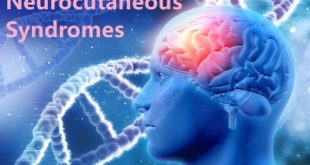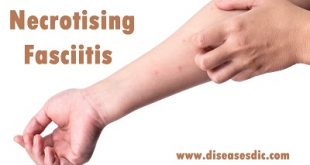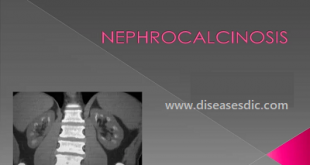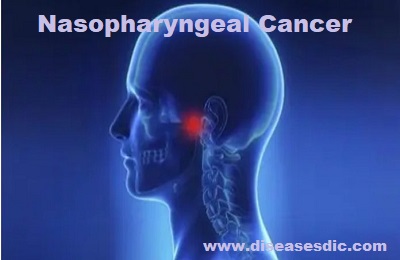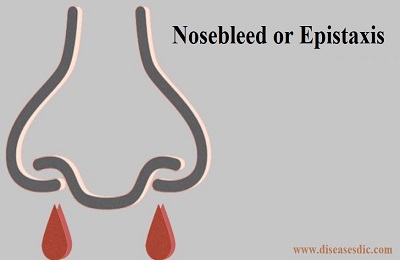What is NTM Lung Disease?
Nontuberculous mycobacterial lung disease or NTM Lung Disease is a serious infection caused by bacteria that are common in the environment and can cause lung damage. Nontuberculous mycobacteria, shortened to NTM, are a type of bacteria found in water and soil. They are aerosolized, which means that the bacteria can exist in water and soil particles that are in the air. People can get NTM lung disease when they breathe in the bacteria. Everyone comes into contact with NTM bacteria during their daily lives. However, not everyone is at risk of getting NTM lung disease. Those with underlying lung conditions like bronchiectasis, COPD, and asthma are at greater risk.
NTM lung disease can make you sick and cause you to experience symptoms, like coughing, fatigue, and shortness of breath. People can have NTM for months, sometimes years, without knowing it because symptoms are similar to other lung conditions.
If ignored, your symptoms can worsen. An NTM infection can cause permanent damage to your lungs over time if left untreated.
What are the most common types of NTM?
Nontuberculous mycobacteria are divided into slow-growing and rapid-growing species.
The most common slow-growing species of NTM are:
- M. avium complex (MAC; consisting of M. avium, M. intracellulare, and M. chimaera)
- M. kansasii
- M. malmoense
- M. xenopi
The most common rapid growing species of NTM are:
- M. abscessus (consisting of M. a. abscessus, M. a. massiliense, M. a. bolletii subspecies)
- M. chelonae
- M. fortuitum
Since the most common group of NTM that cause pulmonary disease in the US are slow growing M. avium complex (MAC), the remainder of this information will focus on this specific group of bacteria, which can lead to significant disease, and death.
What Causes NTM Lung Disease?
Nontuberculous mycobacteria are a group of bacteria naturally found in soil, water and dust worldwide. Everyone inhales NTM into their lungs as part of daily life, and in most people the organisms do no harm. But in a small number of vulnerable individuals, NTM gets established in the lungs as an infection.
There are many species of mycobacteria known to cause disease in humans. The two most widely known are Mycobacterium tuberculosis, which causes tuberculosis, and Mycobacterium leprae, which causes leprosy. The other Mycobacterium species are classified as “nontuberculous” to clearly set them apart. Unlike the others, NTM lung disease is not known to be contagious.
The most common type of NTM bacteria in the U.S. is Mycobacterium avium complex (MAC). The great majority of NTM lung disease in the U.S. is caused by MAC. Two of the other more common NTM species that infect the lungs are M. abscessus and M. kansasii.
Each type of NTM affects the body differently. The severity of disease, how it is treated, and the likelihood of recovery can vary widely from person to person. Some of the factors that impact the course of someone’s NTM lung disease are the virulence of the organism, the amount of exposure they’ve gotten, and their overall health.
Who is at Risk?
Everyone comes into contact with nontuberculous mycobacteria (NTM) bacteria during their daily lives. However, not everyone is at risk of getting NTM lung disease. Most people do not become infected because their lungs are healthy and can clear NTM bacteria. But, people with a history of lung conditions, like bronchiectasis, COPD, or asthma are more likely to develop an NTM infection.
In fact, approximately 50% of people with bronchiectasis may have active NTM lung disease, while people with COPD are almost 16 times more likely to get NTM lung disease.
That’s because certain lung conditions that cause damage to the lungs make it difficult to clear NTM bacteria. This puts people with lung conditions more at risk for getting NTM lung disease.
NTM lung disease is more common in women. People aged 65 and older, a population that is expected to nearly double by 2030, are at an increased risk.
People who have weakened immune systems can also develop NTM infections, including those taking medications which affect immune response.
Symptoms of NTM Lung Disease
- NTMs can cause infections in a wide variety of body sites, most commonly the lungs and in the following areas:
- Skin and soft tissue (typically following surgery, trauma, injection of medications or other substances)
- Device-associated infections (e.g., central line-associated bloodstream infection, exit site infections, pacemaker pocket site infections, etc.)
- Lymph nodes (most commonly in children)
- Blood or other usually sterile locations in the body (disseminated) (most commonly in immunocompromised patients, such as those with HIV or AIDS, but may also be due to invasive medical devices or procedures)
- Symptoms can be vague and nonspecific, such as:
- Fever
- Weight loss
- Night sweats
- Decreased appetite
- Loss of energy
- Other symptoms depend on the site of infection and can include cough, shortness of breath, blood in the sputum, and rashes.
What are the complications of NTM Lung Disease?
- In individuals with NTM with known underlying lung disease, NTM typically resembles tuberculosis only with less severe symptoms of cough, weight loss, and disease predominantly in the upper portion of the cavities within the lung (literally destruction and holes involving the air sacs). Since the mycobacteria are relatively slow growing, there may be extensive disease and lung destruction by the time it is diagnosed.
- In individuals with NTM and underlying lung disease, the pattern of the disease usually is less severe. The typical symptoms can be a persistent cough with sputum production, but usually, there is no fever or weight loss. A syndrome where the right middle lobe or left lingula area of the lung is involved is sometimes called Lady Windermere syndrome.
- Another form of NTM pulmonary disease is hypersensitivity pneumonitis syndrome, which is frequently associated with hot tub use. The NTM thrives in hot water especially since temperatures over 84 F (29.4 C) can cause chlorine to lose its ability to kill germs. Another name for this is “hot tub lung,” and symptoms are typically cough, weight loss, breathlessness, high fevers, wheezing, and fatigue. Symptoms can worsen with each hot tub exposure.
- In individuals with NTM, where the disease has spread, the bacteria can enter the bloodstream and cause disease in other organs and tissues. This spread of NTM primarily occurs in individuals who are immunocompromised, for example, those with AIDS or in chemotherapy. The incidence of the spread of the disease has drastically reduced since the introduction of antiretroviral therapy for HIV/AIDS and the use of antibiotics in AIDS patients to prevent mycobacterial disease as described previously.
NTM Lung Disease – Diagnosis
Nontuberculous mycobacterial lung disease is an infection caused by a type of bacteria. It can have the same symptoms as other lung diseases, so you need to see your doctor for a diagnosis.
What Are the Tests?
Go to the doctor if you have a cough that sticks around for a long time. If you also have night sweats, fevers, shortness of breath, and weight loss that’s hard to explain, get checked out right away.
Your doctor may diagnose you or send you to see a pulmonologist (a doctor who specializes in lung problems).
To diagnose NTM lung disease, your doctor will:
- Do a physical exam
- Go over your medical history
- Take a chest X-ray or do a test called a CT scan to take a picture of the inside of your lungs
- Get a sample of your spit or coughed-up mucus and saliva
A chest X-ray may show signs of NTM lung disease. A CT scan will show more details that point to this infection.
If NTM is to blame, the doctor will see small nodules inside your lungs when they look at the CT scan. They often make a pattern that looks like a budding tree. The CT scan can also show:
- Small holes in your lungs (the doctor may call them cavities) that signal more advanced disease
- Thickened, inflamed airways
- Sores (the doctor might call them lesions)
- Areas of your lungs filled with pus, blood, or tissue (the doctor might call them infiltrates)
The doctor will use a sample of the gunk you’re coughing up to look for the NTM bacteria that cause this infection. This test is called a culture. To be sure you have a good sample, you may need to cough up mucus on a few different days.
Your doctor sends your sample to a lab, where doctors test it to see what kind of bacteria are in it. Your treatments will be based on the exact type of NTM bacteria you have.
If you can’t cough up enough mucus to test, you may need a procedure called a bronchoscopy. Your doctor runs a thin tube through your nose or mouth, and it goes into your lung to collect some fluid and mucus.
Is It Easy to Diagnose?
No. It has the same symptoms as other infections, like tuberculosis. So, your doctor might think you have another disease or want to rule that out first.
If you have mild symptoms, it can take a long time for your doctor to suspect NTM as the cause.
Your lab test is a sure way to tell if you have NTM disease because it’ll find these bacteria.
NTM infections can also look like this:
- Chronic pulmonary obstructive disease (COPD)
- Bronchitis
- Bronchiectasis, an infection that causes your airways to thicken and inflame
- Lung cancer
- Tuberculosis
- Fungal infections
Talk to your doctor if you have symptoms that could be NTM lung disease or another lung problem. Once you get a diagnosis, you can start treatment right away.
Treating and Managing NTM Lung Disease
If you are diagnosed with NTM lung disease, you will work with your doctor to make decisions about your treatment options. How NTM is treated depends on the type of organism causing the infection, the severity of your symptoms and your health history. Because NTM can be challenging to get rid of, you should consider finding a pulmonologist or infectious disease specialist with experience treating people with NTM lung disease.
Treatment of NTM lung disease varies from person to person. Not everyone who is diagnosed with NTM lung disease needs to begin treatment right away. Some localized infections are very slow-growing and may or may not progress. If that is the case, your doctor might recommend a watchful waiting period before starting treatment. You would then be monitored with regular follow-up exams to catch any change in your condition before it causes further damage to your lungs.
If your symptoms are severe, or you have the cavitary form of NTM lung disease, your doctor may want to begin treatment immediately. The standard treatment for most NTM infections is a combination of two or more antibiotics, taken over many months. The specific drugs you are prescribed will depend on the NTM species involved, and whether or not the organism has developed any antibiotic resistance. The progress of your treatment will be monitored by collecting follow-up sputum samples. Your disease will only be considered cured when your samples show no sign of NTM infection for at least 12 months. This is to help make sure that your disease does not come back.
Antibiotic therapy for NTM lung disease can be challenging. Patients may have difficulty keeping up with their prescribed treatment regimen over long periods of time. Side effects from the medications are common, and some individuals may not be able to tolerate some forms of treatment. It is very important to stay in close communication with your healthcare team about your treatment, and any side effects you are experiencing. Do not stop taking antibiotics on your own. It is important to discuss any changes to your prescribed treatment with your doctor because of the potential risk of drug resistance or lowered efficacy. An experienced NTM care team can work with you on finding an alternative approach that works for you.
In some cases, surgery may be a good treatment option. NTM lung disease caused by M. abscessus is usually treated with surgery to remove the infected portion of the lung, followed by drug treatment. MAC patients may also benefit from surgery to remove isolated infections, stop persistent bleeding, or remove the most damaged areas of the lung. In most cases, surgery can be performed using minimally invasive techniques. Your doctor will discuss with you if surgery is a good treatment option in your situation.
Managing the Disease
No matter what type of NTM lung disease you have, or how it is being treated, there are many things you can do to ease your symptoms and improve your overall health and well-being.
Taking care of your lungs is critically important to your recovery, especially if you also have bronchiectasis, COPD or another chronic lung disease. Some proven-effective recommendations are:
- Airway clearance techniques are used to reduce the mucus build-up in your lungs and airways. This helps prevent new infections, reduce uncontrolled coughing and improve breathing ability. Chest physical therapy, nebulized hypertonic saline, postural drainage, oscillation vests, chest percussion devices and controlled “huff” coughing can all be used to thin, loosen and expel thick mucus.
- Preventing infections through good hygiene and regular immunizations against influenza and pneumonia, both of which can cause severe complications for people living with NTM and other lung diseases.
- Avoiding exposure to smoke and other lung irritants helps to reduce inflammation that can worsen lung disease. If you are a smoker, it is especially important that you quit as soon as possible.
Other healthy behaviors that will help you manage your NTM disease include:
- Exercise to build your endurance, strengthen your breathing ability and lift your mood.
- A well-balanced diet helps you maintain a healthy weight and get the nutrients you need to fight your infection.
NTM lung disease is a serious infection that can have a significant impact on your life and that of your families and friends. Depression and anxiety are common, and you should feel comfortable discussing these feelings with your doctor and asking for help with treatment and support when you need it.
You will also want to take some steps to reduce your exposure to NTM in your environment. Although it would be impossible to completely avoid these common organisms, there are some basic precautions you can take:
- Raise the temperature of your household water heater to at least 130° F.
- Use a vent fan in your bathroom, kitchen, and other steamy areas
- Stay away from hot tubs, spas, and other recirculating hot water sources indoors
- Wear a dust mask when working in the yard
- Wet down potting soil to reduce dust
Prevention of NTM Lung Disease
- The best way to prevent NTM lung disease is to make sure all your taps and water appliances (showers, baths, spa baths) are installed and working correctly, and your hot water system is operating at the recommended temperature (>60 ºC).
- If you are gardening – particularly if you are working with soil or a potting mix – wear a dust mask to avoid breathing in a particulate matter which could contain NTM.
 Diseases Treatments Dictionary This is complete solution to read all diseases treatments Which covers Prevention, Causes, Symptoms, Medical Terms, Drugs, Prescription, Natural Remedies with cures and Treatments. Most of the common diseases were listed in names, split with categories.
Diseases Treatments Dictionary This is complete solution to read all diseases treatments Which covers Prevention, Causes, Symptoms, Medical Terms, Drugs, Prescription, Natural Remedies with cures and Treatments. Most of the common diseases were listed in names, split with categories.
